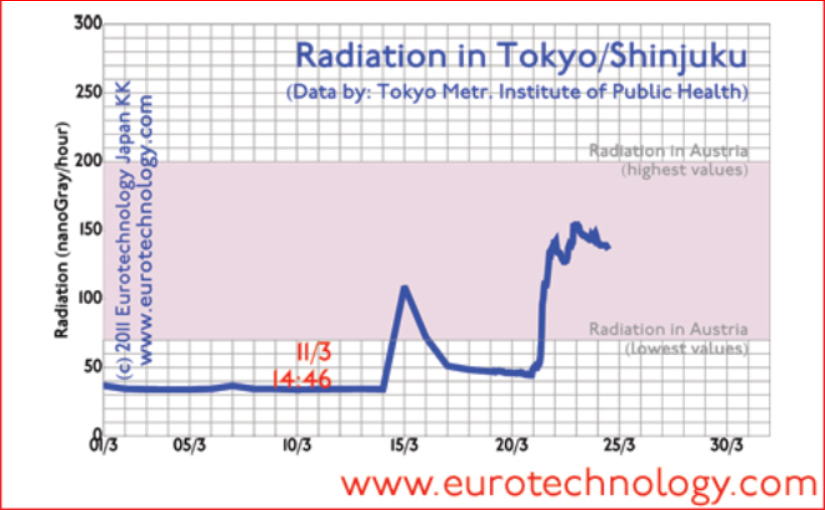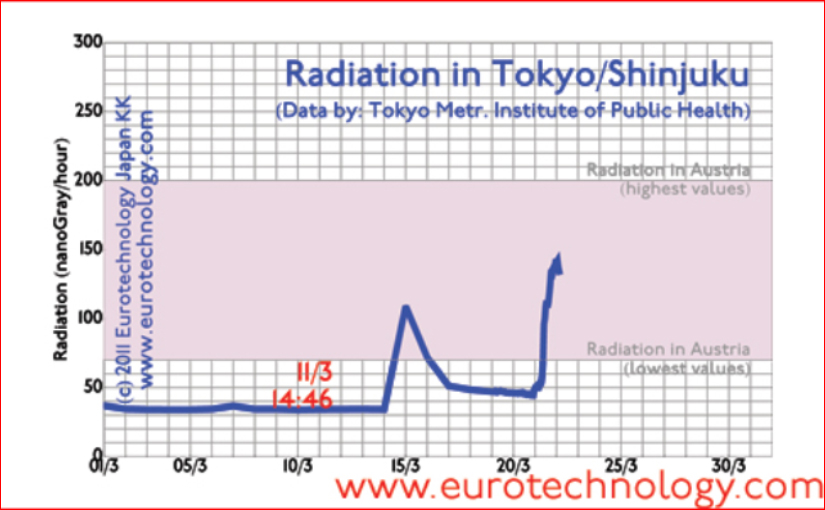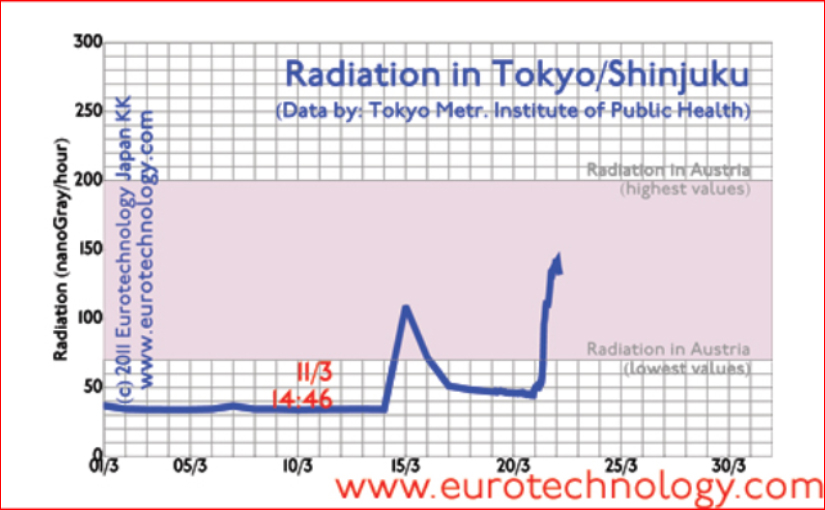Tag: radiation
-
![Fukushima disaster impact on Tokyo [5]: Radiation risk situation for Tokyo, Business risk impact](https://www.eurotechnology.com/b/wp-content/uploads/2011/04/quakes_map_825_510.jpg)
Fukushima disaster impact on Tokyo [5]: Radiation risk situation for Tokyo, Business risk impact
5th update on the crisis in Tokyo, focusing on radiation and business impact Fukushima nuclear accident impact on Tokyo, 12 April 2011 This is our 5th update on the crisis in Tokyo, focusing mainly on the radiation and impact on business in Japan. The continuing quakes (as shown below) do present risk. To my knowledge,…
-
![Fukushima nuclear disaster impact on Tokyo [4]](https://www.eurotechnology.com/b/wp-content/uploads/2011/03/cc_20110328rad1_825_510.jpg)
Fukushima nuclear disaster impact on Tokyo [4]
Radiation levels in Tokyo Fukushima nuclear disaster impact on Tokyo update No. 4 of 28 March 2011 Fukushima nuclear disaster impact on Tokyo: This is our 4th update on the crisis in Tokyo, focusing mainly on the radiation and impact on business in Japan. Our future expert newsletters will discuss earth quakes. Despite all the…
-
Impact of the Fukushima and Tohoku triple disaster on Japan’s economy (AlJazeera TV interview)
AlJazeera live TV interview about impact of the disaster on Japan’s economy Watch Aljazeera interview video clip and read article here
-

Fukushima disaster impact on Tokyo – Update No. 3
Radiation fall-out on Tokyo 3rd update of 24 March 2011 This is our third update on the crisis situation in Tokyo, focusing mainly on the radiation risk, and impact on business in Japan. Strong after-quakes are still continuing everyday, more than 300 after-quakes stronger than magnitude 5 were counted since the initial magnitude 9 quake…
-

Radiation in Tokyo: Fukushima disaster update No. 2
Radiation in Tokyo due to the Fukushima nuclear disaster Our second update of the radiation and disaster situation in Tokyo, as of 22 March 2011 Suffering caused by the Friday March 11, 14:46 earthquake in Japan continues, but we see hope and reconstruction. Tomorrow the new high-speed train line north of the disaster zone is…
-

Understanding radiation in Tokyo: Japan crisis update No. 1
Understanding radiation in Tokyo as a consequence of the Fukushima nuclear disaster Sources of radiation information and analysis as of 18 March 2011 On Friday March 11, at 14:46 one of the world’s largest earthquakes ever happened close to Japan’s coast near Fukushima, triggering a series of disasters which are still ongoing, and which brought…